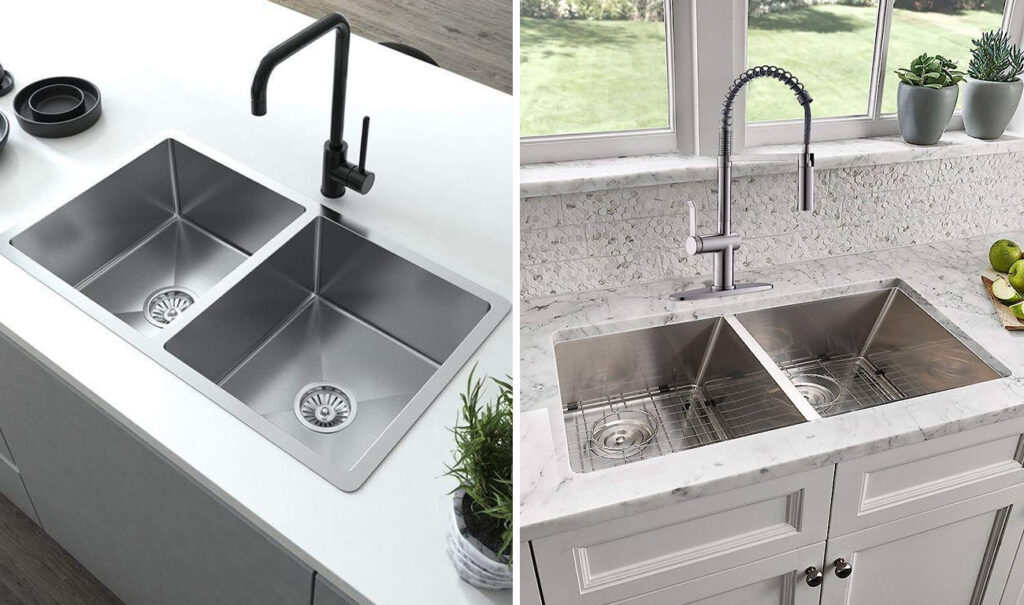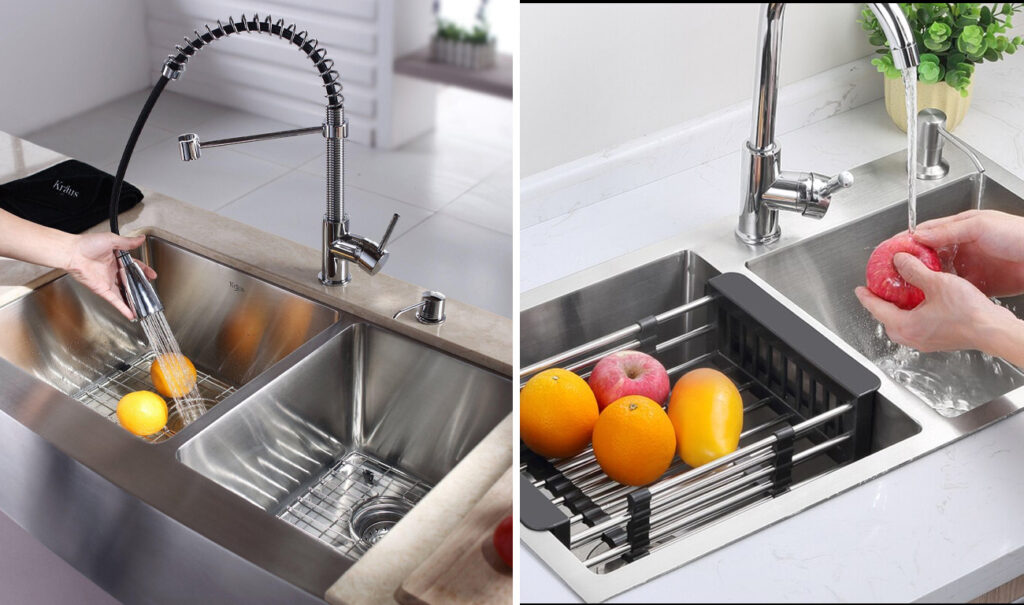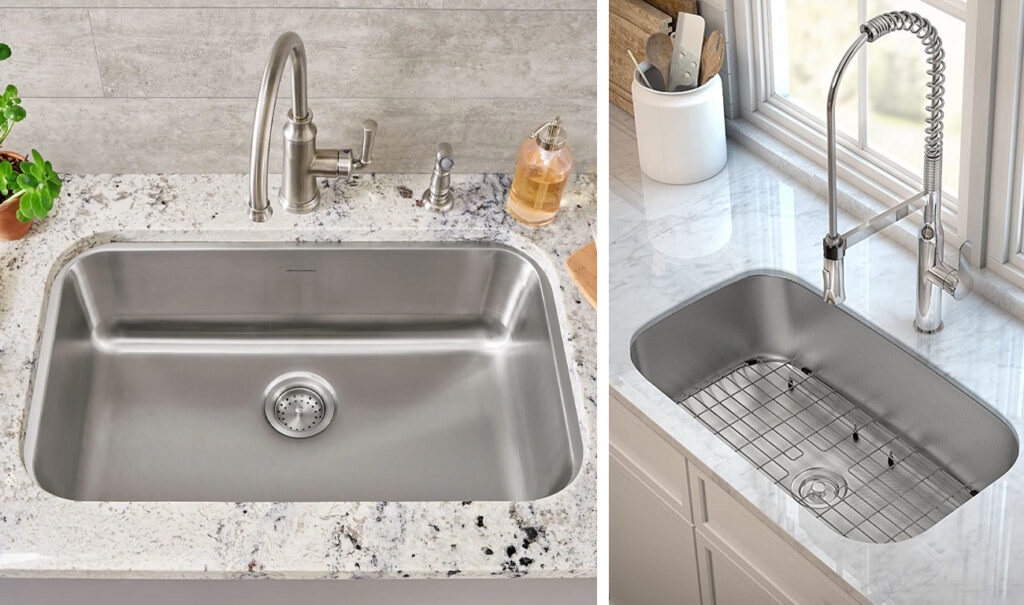The kitchen sink industry has evolved pretty much in the past few decades. From double bowl sinks to complete combo workstation sinks, you can see quite a lot of options for kitchen sinks. The kitchen sink is one of the essential kitchen fixtures in every home, serving as a functional centerpiece for food preparation, dishwashing, and more. However, when it comes to choosing the right sink for your kitchen, one important decision you’ll face is whether to opt for a double bowl sink or a single bowl sink. In this article, we will explore the features, benefits, and considerations of each type to help you determine which one best suits your needs.
Double Bowl Sinks

Double bowl sinks offer versatility in various ways. They provide separate washing and drying zones, allowing you to multitask efficiently. With two bowls, you can simultaneously wash dishes and rinse produce or keep dirty dishes on one side while having a clean workspace on the other. Double kitchen sinks come in different configurations, including equal-size bowls, unequal size bowls, or offset bowls, providing flexibility to accommodate your preferences and requirements.
Advantages of Double Bowl Sinks

The ability to wash and rinse simultaneously is a significant advantage of double bowl sinks. This feature is particularly beneficial for large families or those who frequently entertain guests. It enables a smoother workflow in busy kitchens, as multiple tasks can be carried out simultaneously. Additionally, double bowl kitchen sinks allow you to separate tasks effectively, preventing cross-contamination between different items. Fragile dishes can be handled with care in one bowl, while heavier or soiled items are washed in the other. The flexibility of design and functionality is another advantage, as double sinks offer various faucet and accessory options and can provide space for a garbage disposal unit or food preparation area.
Considerations for Double Bowl Sinks
Before choosing a double bowl sink, there are a few considerations to keep in mind. Firstly, assess the space available and the size of your cabinet. Double kitchen sinks require sufficient room to accommodate both bowls comfortably. Also, consider the cleaning and maintenance aspects, as having two bowls means managing and maintaining two separate areas. Some double bowl sinks may have hard-to-reach corners that require extra attention during cleaning. Finally, take into account your personal preferences and usage habits. Analyze your cooking and cleaning needs to ensure that a double bowl sink aligns with your lifestyle and requirements.
Single Bowl Sinks

Single bowl sinks offer spaciousness and versatility. With a single large basin, these sinks can accommodate oversized cookware and provide ample space for washing large items. Single bowl kitchen sinks also boast streamlined aesthetics, making them a popular choice for contemporary kitchens. They seamlessly integrate with the countertop, creating a clean and modern look. Furthermore, single basin sinks maximize counter space, providing uninterrupted surface area for additional tasks such as food preparation or placing drying racks.
Benefits of Single Bowl Sinks

The primary benefit of a single bowl sink is its ability to accommodate oversized cookware. If you frequently use large pots and pans or engage in gourmet cooking, a single bowl sink offers the space needed for easy cleaning and filling. Single bowl kitchen sinks also provide simplicity and ease of use. With no dividing barrier, they allow for a seamless flow of utensils and food preparation. Additionally, single bowl sinks typically involve lower maintenance and installation costs compared to their double bowl counterparts. They have fewer parts and connections, simplifying the plumbing requirements and reducing the potential for issues.
Considerations for Single Bowl Sinks
While single bowl kitchen sinks offer their advantages, it’s important to consider a few factors before making a decision. One consideration is the limited separation of tasks. Unlike double bowl sinks, there is no distinct division for washing and rinsing, which may require you to juggle these activities within a single basin. Additionally, compatibility with smaller kitchens is a factor to contemplate. If you have limited space, a single bowl sink may be more suitable as it maximizes the available area and can adapt well to compact layouts.
Conclusion
Choosing between a double bowl sink and a single bowl sink ultimately depends on your specific needs, kitchen layout, and personal preferences. While double bowl sinks offer versatility and functionality for multitasking, single basin sinks provide a spacious and streamlined design. Consider your cooking habits, family size, and available space when making your decision. Ultimately, selecting the right sink will enhance your kitchen’s efficiency, aesthetics, and overall functionality.
